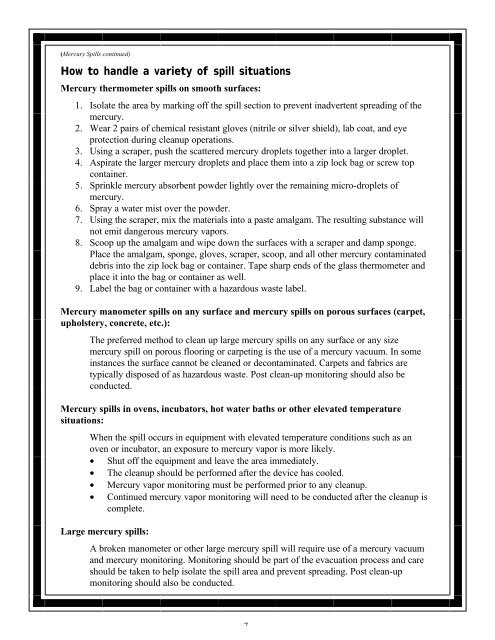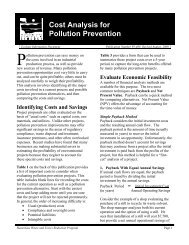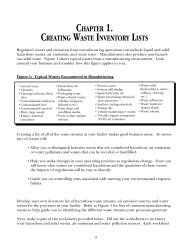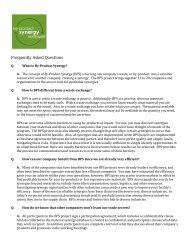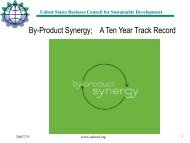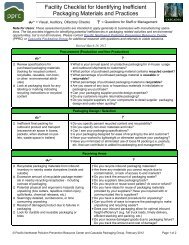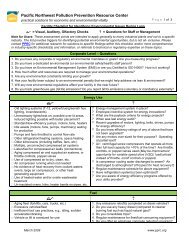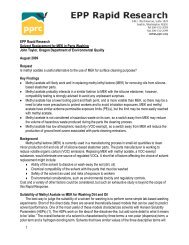Laboratory Spill Procedures Handout
Laboratory Spill Procedures Handout
Laboratory Spill Procedures Handout
Create successful ePaper yourself
Turn your PDF publications into a flip-book with our unique Google optimized e-Paper software.
(Mercury <strong>Spill</strong>s continued)<br />
How to handle a variety of spill situations<br />
Mercury thermometer spills on smooth surfaces:<br />
1. Isolate the area by marking off the spill section to prevent inadvertent spreading of the<br />
mercury.<br />
2. Wear 2 pairs of chemical resistant gloves (nitrile or silver shield), lab coat, and eye<br />
protection during cleanup operations.<br />
3. Using a scraper, push the scattered mercury droplets together into a larger droplet.<br />
4. Aspirate the larger mercury droplets and place them into a zip lock bag or screw top<br />
container.<br />
5. Sprinkle mercury absorbent powder lightly over the remaining micro-droplets of<br />
mercury.<br />
6. Spray a water mist over the powder.<br />
7. Using the scraper, mix the materials into a paste amalgam. The resulting substance will<br />
not emit dangerous mercury vapors.<br />
8. Scoop up the amalgam and wipe down the surfaces with a scraper and damp sponge.<br />
Place the amalgam, sponge, gloves, scraper, scoop, and all other mercury contaminated<br />
debris into the zip lock bag or container. Tape sharp ends of the glass thermometer and<br />
place it into the bag or container as well.<br />
9. Label the bag or container with a hazardous waste label.<br />
Mercury manometer spills on any surface and mercury spills on porous surfaces (carpet,<br />
upholstery, concrete, etc.):<br />
The preferred method to clean up large mercury spills on any surface or any size<br />
mercury spill on porous flooring or carpeting is the use of a mercury vacuum. In some<br />
instances the surface cannot be cleaned or decontaminated. Carpets and fabrics are<br />
typically disposed of as hazardous waste. Post clean-up monitoring should also be<br />
conducted.<br />
Mercury spills in ovens, incubators, hot water baths or other elevated temperature<br />
situations:<br />
When the spill occurs in equipment with elevated temperature conditions such as an<br />
oven or incubator, an exposure to mercury vapor is more likely.<br />
• Shut off the equipment and leave the area immediately.<br />
• The cleanup should be performed after the device has cooled.<br />
• Mercury vapor monitoring must be performed prior to any cleanup.<br />
• Continued mercury vapor monitoring will need to be conducted after the cleanup is<br />
complete.<br />
Large mercury spills:<br />
A broken manometer or other large mercury spill will require use of a mercury vacuum<br />
and mercury monitoring. Monitoring should be part of the evacuation process and care<br />
should be taken to help isolate the spill area and prevent spreading. Post clean-up<br />
monitoring should also be conducted.<br />
7


